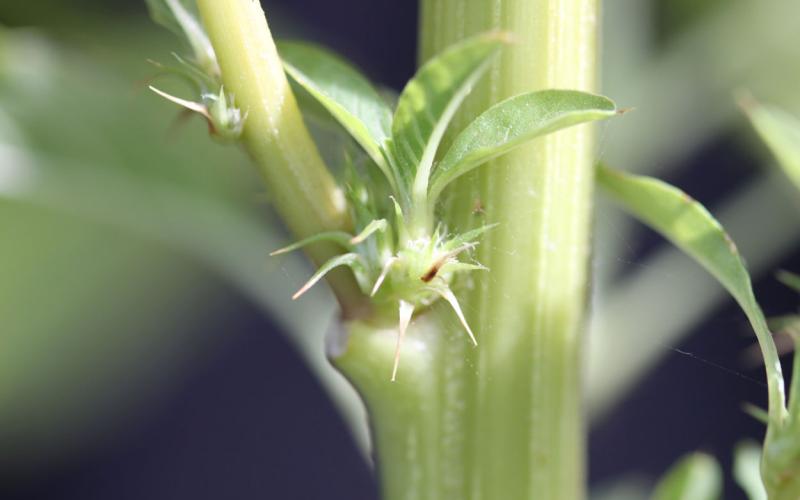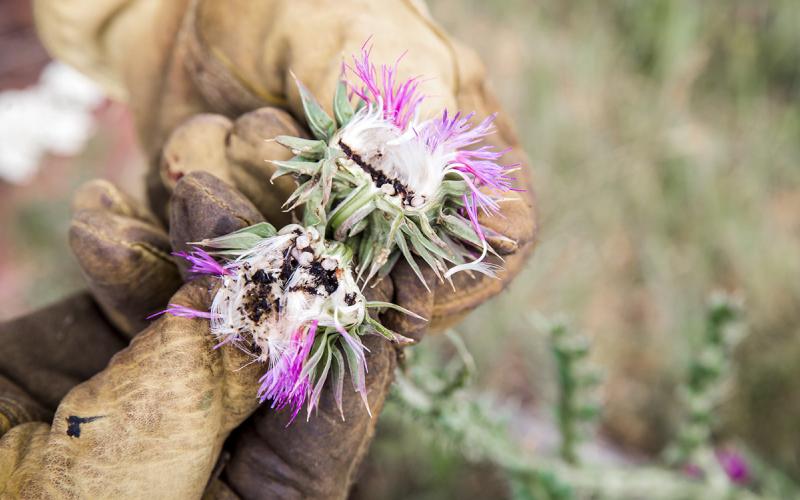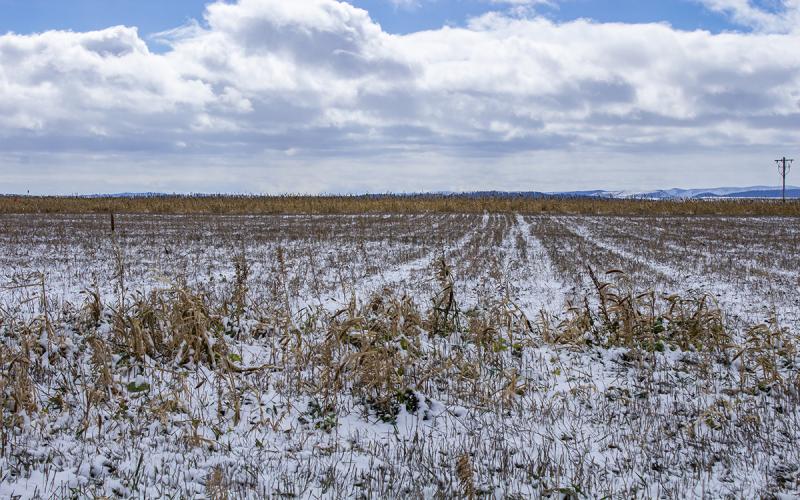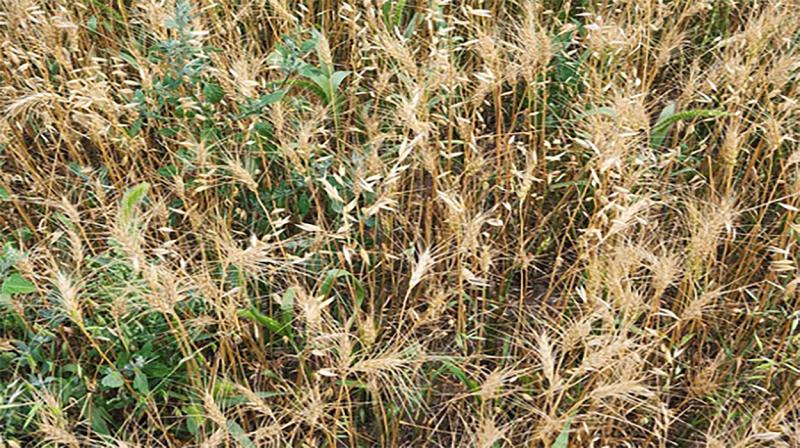
Many pre and postemergence herbicides did not adequately control weeds during the 2023 growing season due to early dry and hot conditions (Figure 1). Despite the poor control, there are still options to implement at-harvest and post-harvest to help manage weeds.
Weed Management Tactics
Harvest aid.
Wheat and weeds may need to be desiccated with an herbicide to facilitate harvesting. Weeds still actively growing may be controlled with the herbicide being applied as a harvest aid desiccate. Consult the latest SDSU Wheat Pest Management Guide to determine the herbicides that are labeled for harvest aid and weed control.
Harvest weedy fields last.
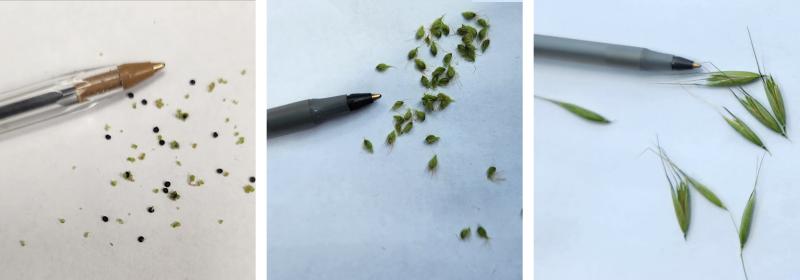
The seeds of weeds that infest wheat fields are very small in size (Figure 2). The transport of weed seeds can be minimized if the fields that incurred better weed control or have less weeds are harvested first. If the weedy fields are harvested first, the seeds will spread to other fields, and more weeds will have to be controlled in the subsequent growing season.
Chaff lining.
Chaff lining is directing the harvest residue into a windrow (Figure 3). Chaff lining does not directly control the weeds, but concentrates the weed seeds into the windrow.
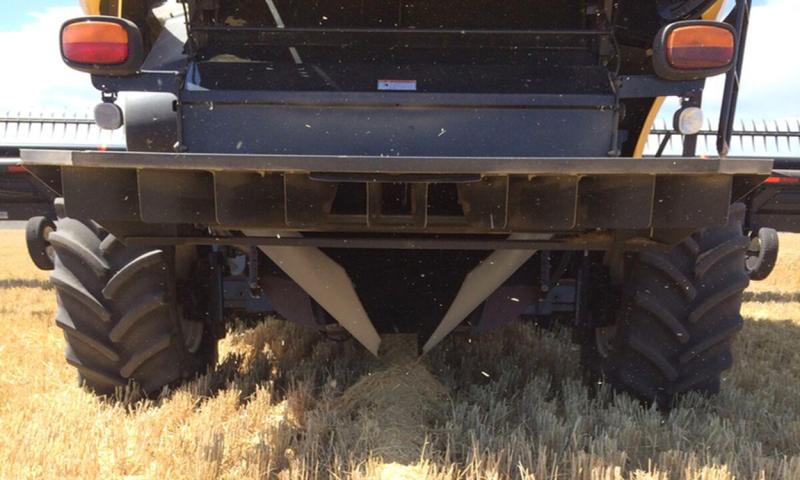
The windrow of concentrated weed seeds can be the focus of pre and postemergence herbicide applications in the subsequent growing season. Chaff lining chutes can be homemade, or kits can be purchased.
Map weedy areas within fields.
Detailed notes of weedy areas in the field during harvest can help improve weed control in subsequent growing seasons by focusing on the areas that had great weed pressure. While mapping weedy areas is critical, making notes of what species are present in the area can further improve weed control by ensuring the correct herbicide is applied or other management tactics are implemented for the next growing season.
Clean machinery after harvest.
Even if weedy fields are harvested last, combines and machinery should still be cleaned of weed seeds. Weed seeds can remain viable and be transported to other fields by equipment later. The residue from cleaning the equipment should be contained and destroyed so the weeds are not potentially transported to other areas by animals, humans, water, or wind.
Post-harvest control.
Weeds greater than 4 inches will likely not be controlled with an herbicide used as a harvest desiccant. Herbicides can be applied after wheat harvest to control weeds still actively growing. Weeds of large size (greater than 6 inches) may not be effectively controlled; weed control will be dependent on what weed species are present and the selected herbicide. Consult the latest SDSU Wheat Pest Management Guide to determine the herbicides that are labeled for post-harvest weed control and rotation restrictions.
